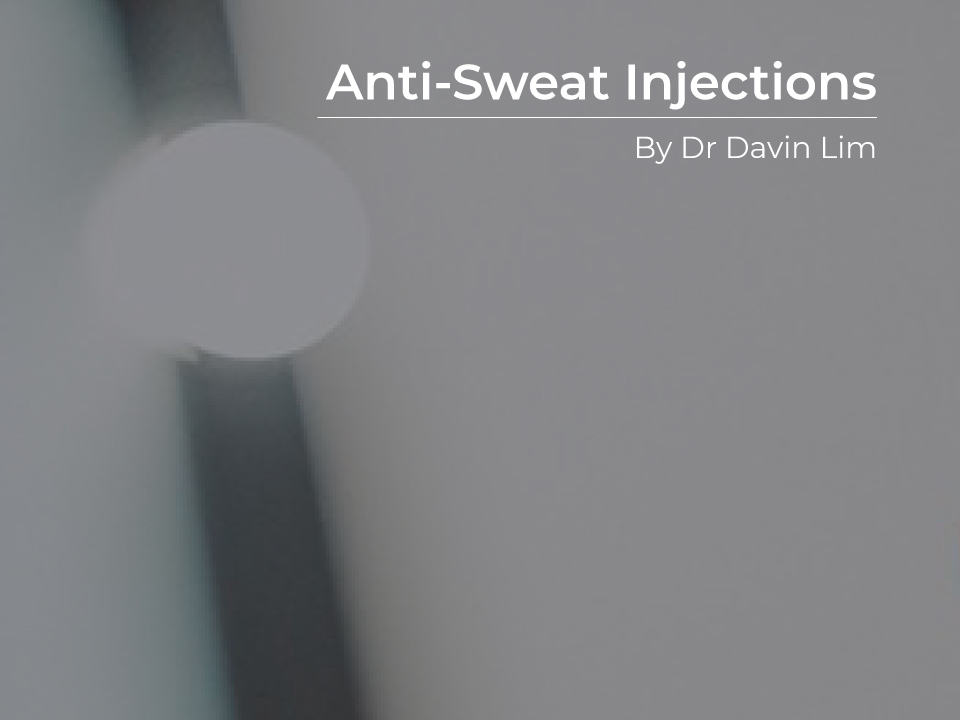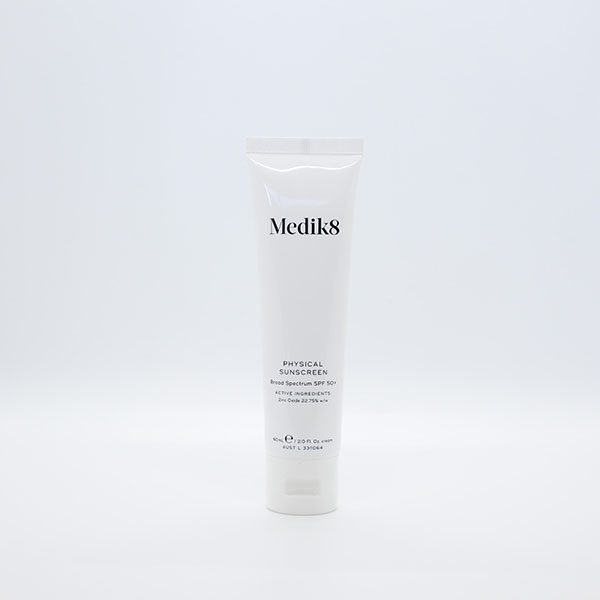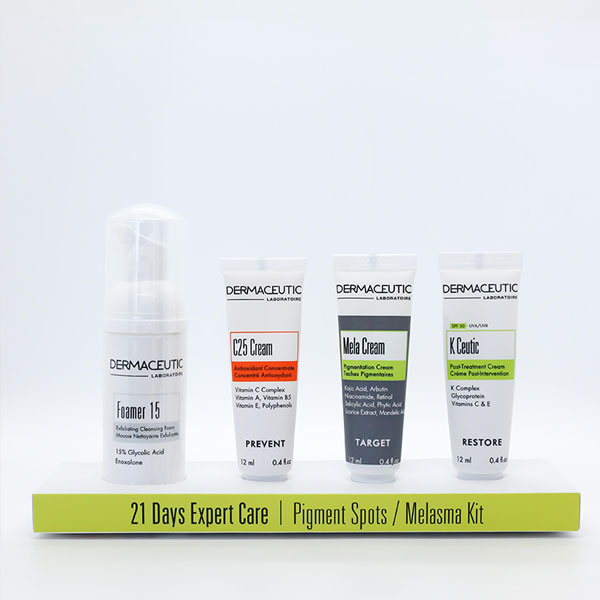Excessive underarm sweating or axillary hyperhidrosis is a common condition that can be safely & effectively treated with treatments covered under Medicare. For less than two dollars a day, you can be sweat free. Dermatologists inject a TGA approved anti-sweat molecule, similar to the ones used to treat wrinkles.
Key Points
- Severe underarm sweating affects 2-3% of the population
- Sweat stopping injections are partially covered through Medicare
- As this treatment is subsided, it cost less than $2 a day to remain sweat free
- The procedure takes 2 minutes to perform
- Sweating will stop within 10 days
- Treatments are side effect free & works in over 96% of cases
Anti-sweat injections at a glance
FAQs
How effective are anti-sweat injections?
Very. For underarm or axillary hyperhidrosis, we can expect an efficacy rate of 96%. In most cases this treatment completely turns off sweating.
Why is this treatment under Medicare?
Many people don’t know that Medicare covers a significant part of this treatment if it is performed by a specialist dermatologist. This is because axillary hyperhidrosis is a medical & not a cosmetic procedure (however many cosmetic clinics wrongly advertise it as cosmetic).
The caveat for a Medicare rebate is that you must try (at the very least) to use aluminium chloride hexahydrate antiperspirants prior to anti-sweat injections for the excessive underarm sweating.
What is involved with treating excessive underarm sweating?
This simple procedure is as follows-
- Area of sweating is defined & marked. It most commonly follows the outline of hair bearing (or ex-hair bearing) areas
- Tiny blebs of anti-sweating solutions are placed in these areas
- Typically, 15 to 25 injections are administered
- It feels like an ant bite, & the whole thing is over in 90 seconds
- It is that easy
How long do anti-sweat injections take to work?
Most patients notice a reduction of sweat within a week, in some it may take up to 14 days before maximal results are seen.
The results typically last over 6 months for most, first timers usually 4+ months, with extension in subsequent treatments.
How many sessions does Medicare subsidise a year?
Three, however they must be performed a minimum of 4 months apart. Medicare subsidies up to 200 units per session, however most (>95%) require only 100 units.
How experienced are we in effectively treating excessive sweating?
We have treated over 8,000 cases over the past 20 years. Our dermatologists were one of the firsts in Australia to perform this procedure & were involved in upskilling other dermatologists.
Your specialist can discuss the role of other treatments, including tablets, miraDry & other surgical treatments.
What are the side effects?
Side effects are uncommon & last 24 to 48 hours. They include-
- Bruising
- Redness
- Transient swelling
There are no reported cases of nerve damage, there is one reported case of transient rebound sweating in the literature.
Why do you need to try antiperspirants before anti-sweating injections?
Because, like the Covid jab, the government says so. If you have at least tried but cannot tolerate aluminium chloride antiperspirants, we have the option of offering your anti-sweat injections through Medicare. Here’s a few hints on antiperspirant use-
- Choose one with 20% aluminium
- Apply at night after a shower to the underarms
- Always apply to ‘dry’ underarm skin
- Modulate use depending on efficacy or lack there of
Does Medicare cover other areas of sweating?
The Medicare rebate only applies to severe axillary or underarm sweating. Though palmar hyperhidrosis or sweaty hands has a higher impact on patients, Medicare only covers underarm sweating.
It is common knowledge that the only reason this rebate exists is because a particular policy maker in Medicare has a child that suffered from axillary hyperhidrosis & not sweaty palms.
How do we perform anti-sweat injections for sweaty hands?
This treatment is more involving than underarm sweat treatments. It requires a nerve block, numbing & ice.
Each hand requires between 80 to 100 units, placed in the skin of the fingers & palms.
Side effects include transient muscle weakness lasting a few weeks, & excessive drying. The main issue is cost, as this is not under Medicare. As a guide 200 units cost between $2790 to $3790 depending on who performs the procedure.
How can a sweaty scalp be treated with anti-sweat injections?
Anti-sweat injections are highly effective in the scalp area. They work in over 80% of cases. The main factor is surface area of involvement. As a guide 100 units treat between 1.5 to 2 palms. Most patients require between 150 to 250 units, depending on the extent of scalp sweating.
A cost-effective solution is to see our nurse injectors, however if costs are irrelevant, our dermatologists can treat.
Anti-sweat injections are effective in over 98% of cases & is covered by Medicare. The procedure takes less than a minute to perform & often lasts beyond 6 months.
Can facial sweating be treated with anti-sweat injections?
Yes, however the efficacy will depend on the areas involved. As this injection stops both sweating & muscle movement, precise injections will preserve movement & stop sweating.
This is not covered under Medicare. Our nurse injectors can provide an assessment & advice, alternatively see one of our dermatologists. As a guide we use between 32 to 58 units to treat the face.
What are other more permanent solutions?
For more permanent solutions, the treatments are invasive, meaning that your sweat glands must be destroyed, or the nerves supplying these glands cut. They include-
- miraDry or electromagnetic energy delivered to sweat glands over 2 sessions. The side effect rate of this treatment is too high for our practice.
Learn More (link to miraDry in this section)
- ETS surgery or endoscopic thoracic sympathectomy is more effective & more cost effective than miraDry. The main side effect is compensatory hyperhidrosis.
Learn More (link to ETS surgery in this section)
- Sweat gland liposuction with RF ablation. This is a safe & highly effective procedure for axillary hyperhidrosis. Unlike the two invasive treatments of miraDry, this procedure only requires one session.
Learn more (link to surgical procedures for sweating in this section)
What causes axillary hyperhidrosis or excessive underarm sweating?
Nerves within the body stimulate eccrine or sweat glands to activate, in turn producing sweat. Incorrectly functioning nerves cause the body to overcompensate & produce excessive sweating, this is termed hyperhidrosis.
Various conditions can contribute to hyperhidrosis, including genetics, hormonal changes during menopause (hot flashes), thyroid disorders & diabetes. Whatever the underlying cause, the use of anti-wrinkle can be an effective treatment.
Will I outgrow excessive sweating?
If it is genetic, or primarily hyperhidrosis, you may experience improvement in the 5th to 6th decade of life. Some patients ‘outgrow’ this condition; however it is rare
How does anti-wrinkle for excessive sweating compare with other brands?
Under Medicare, dermatologists must use anti-wrinkle to treat underarm sweating. It is also listed under the PBS or pharmaceutical scheme. This means you are entitled to the Medicare rebate.
We do use Anti-wrinkle or Xeomin to treat patients who do not have Medicare. In our experience anti-wrinkle gives a marginal increase in longevity with less ‘units’ required to stop sweating.
How do anti-sweat injections compare to miraDry?
anti-wrinkle vs miraDry is a continual debate. Our dermatologists have extensive experience with both as we were the first to use miraDry in Australia. Here is our take-
Advantage of anti-wrinkle: safe, no downtime treatment with a very high (>96%) efficacy rate. Patients who have this treatment will have at least 80-90% total cessation of sweating. Medicare subsidy means the average person is paying less than $2 a day to be sweat free.
Disadvantage of anti-wrinkle: treatments require repeat injections every 6 months, with ranges between 3 months all the way to 24 months.
Have a read about miraDry.
Can it be used in iontophoresis?
It can be used in a liquid with iontophoresis assistance to deliver this molecule into sweat glands of the hands, feet & underarms. The name of this procedure is termed iontophoresis assisted delivery. It is non-invasive & is a novel treatment for hyperhidrosis.
The main drawback is that Medicare does not cover this treatment, & hence it costs upwards of $2600 for a treatment that lasts 8-16 weeks.
What if my underarm sweating is resistant?
Then you fall in the 4% of cases. Our dermatologists can troubleshoot with these solutions:
- Exclude other physical causes of sweating, tablets, medical etc.
- Understand the psychological input, consider CBT by psychologist
- Trial of 200 units, namely 100 each side
- Refer to ETS surgery of consider eccrine liposuction & RF
At what age can anti-wrinkle be performed for axillary hyperhidrosis?
12 years old is the minimum age for anti-wrinkle injections for hyperhidrosis under Medicare. For this age group we always use numbing cream & cryo application. This makes injections pain free.
What are the official Medicare guidelines for the treatment of severe underarm sweating?
Dermatologists use this item number to enable you to claim from Medicare. The guidelines must be followed & read as the following.
(a) the patient is at least 12 years of age; and
(b) the patient has been intolerant of, or has not responded to, topical aluminium chloride hexahydrate; &
(c) the patient has not had treatment with botulinum toxin within the immediately preceding 4 months; &
(d) if the patient has had treatment with botulinum toxin within the previous 12 months – the patient had treatment on no more than 2 separate occasions




